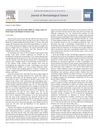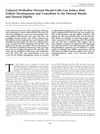Bone-Forming Cells with Pronounced Spread into the Third Dimension in Polymer Scaffolds Fabricated by Two-Photon Polymerization
December 2016
in “
Journal of Biomedical Materials Research Part A
”
mesenchymal progenitor cells human hair roots polymer scaffolds two-photon polymerization Ti-sapphire femtosecond laser osteogenic lineage hydrophilic 3D scaffolds calcium-binding proteins actin cytoskeleton extracellular matrix stem cells hair root cells 3D scaffolds laser polymerization bone cells calcium proteins cell matrix
TLDR Bone-forming cells grow well in 3D polymer scaffolds with 35 µm pores.
The study demonstrated that bone-forming cells from human hair roots, when seeded onto polymer scaffolds fabricated using two-photon polymerization, exhibited significant three-dimensional spreading and differentiation into osteoblast-like cells. The optimal scaffold pore size was 35 µm, which led to high production of calcium-binding proteins like collagen type I and increased activation of the actin cytoskeleton. This approach showed potential for bone tissue engineering, particularly in dental applications, by creating a composite material of polymer, bone-forming cells, and calcium minerals.




